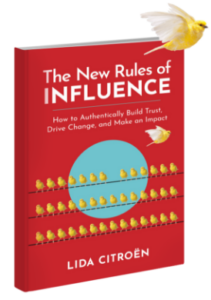If you are an extrovert (like me) you might view networking as easy. All I have to do is go up to a complete stranger, introduce myself and share with them something interesting or compelling so they will keep talking to me. I will ask them probing questions about themselves that will get them talking about their interests and we will both explore whether a mutually beneficial business relationship might ensue. Easy, right? Not even for extroverts or very social people.
 Networking is challenging for everyone. Even the most seasoned and social networkers still wrestle with forming new, strategic relationships and extracting value from their contacts.
Networking is challenging for everyone. Even the most seasoned and social networkers still wrestle with forming new, strategic relationships and extracting value from their contacts.
Unlike our social relationships, I emphasize the importance of networking in an intentional and strategic way. “Intentional Networking” is the focused approach to meeting members of your target audience in genuine and authentic ways and nurturing mutually beneficial, professional relationships that stand the test of time.
So why does intentional networking feel so challenging?
- Fear of Rejection.
The idea of making yourself vulnerable by initiating contact with a complete stranger, even if you know who they are, brings up our insecurities and fears of rejection and criticism. “What if they don’t want to talk to me? What if they walk away? Maybe they will laugh at me for daring to approach them?”
In reality, when someone approaches us at a networking event, or even at a coffee shop, to initiate a conversation, most of us will listen to what they say. If the direction of the conversation goes somewhere inappropriate, we might reject the initiator. If the discussion is an introduction and the initiator appears genuine and interesting, most of us will continue.
- Lack of Preparation.
Many people in the groups I train, tell me they never know what to say or do in networking situations. “What are ice breakers and conversation starters? What do I tell them about myself?”
If you are heading out to a business event or networking reception, being prepared can alleviate some fear. Before you go, research the people you’d like to meet at the event. Look at their LinkedIn profiles to see what they do, how they work and what recent milestones or successes you could use as ice breakers to start a conversation.
Practice your ice breakers and elevator pitch. How will you initiate conversation? What topics do you want to discuss? Be sure to have a game plan for how you’d like the conversation to go. Why leave something this important to chance?
- Forgetting the Follow-Up.
Before you head out to a networking event, already craft how, when and where you will follow up. One tactic I take is to have a recent blog or article that I’ve written or read on my mind. In the initial conversation, I reference the blog or article and offer to send my new contact a copy of it. Then, I do it! They typically comment that it was thoughtful of me to follow through and our conversation continues.
One of the first things I advise clients to do after they meet someone in a professional setting, is view their LinkedIn page to see what their professional interests are. Where can you add value? What do you share in common? Then, if it seems appropriate, send an invitation to connect on LinkedIn and continue the conversation. Be sure to personalize the invitation to connect by referring to where you met.
Networking is a skill and an art. Understanding the steps and working a strategy is the skill, while remaining genuine and relatable is the art. With practice, you can learn to be more intentional and focused in the professional relationships you develop to aid and grow your career.


